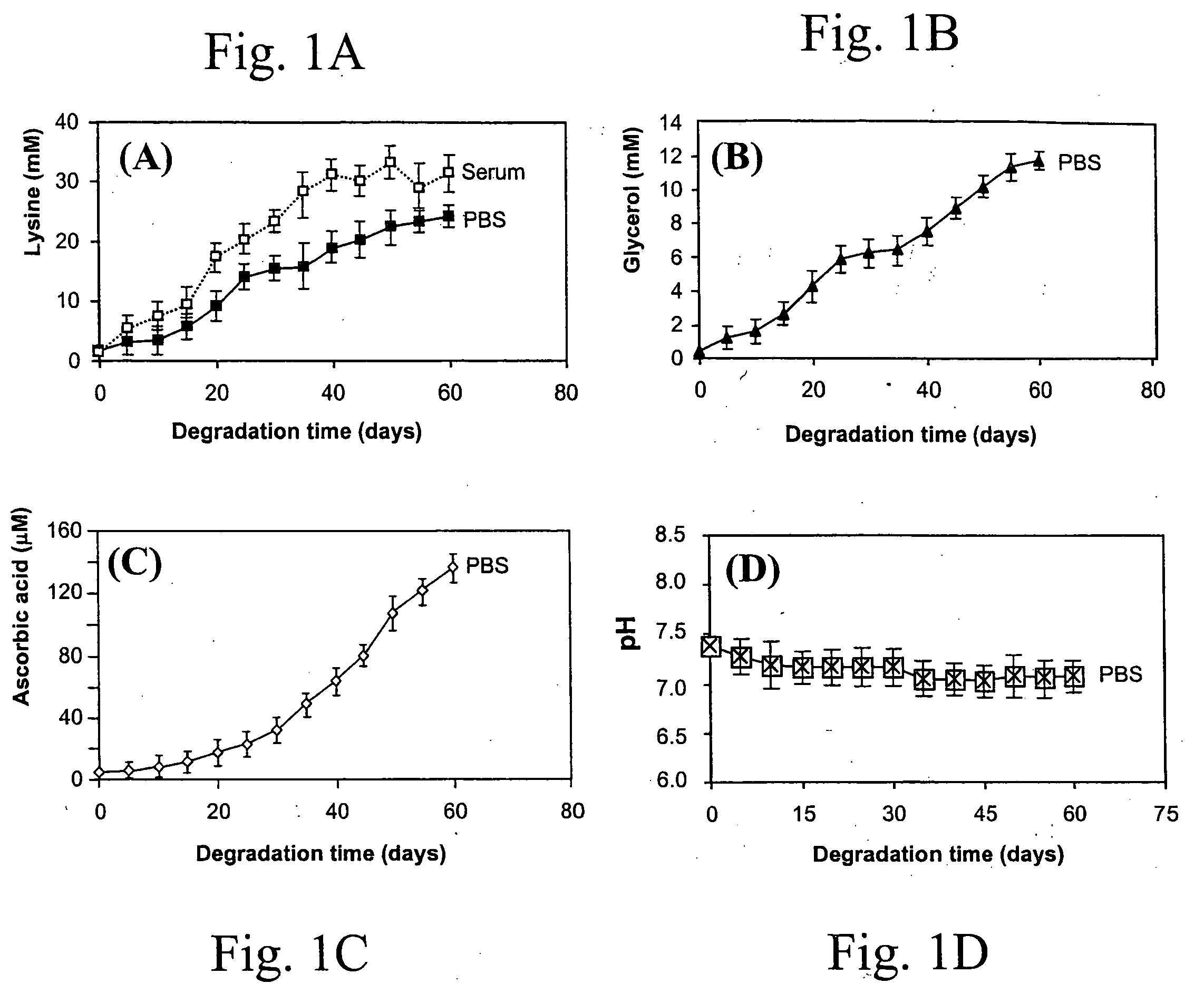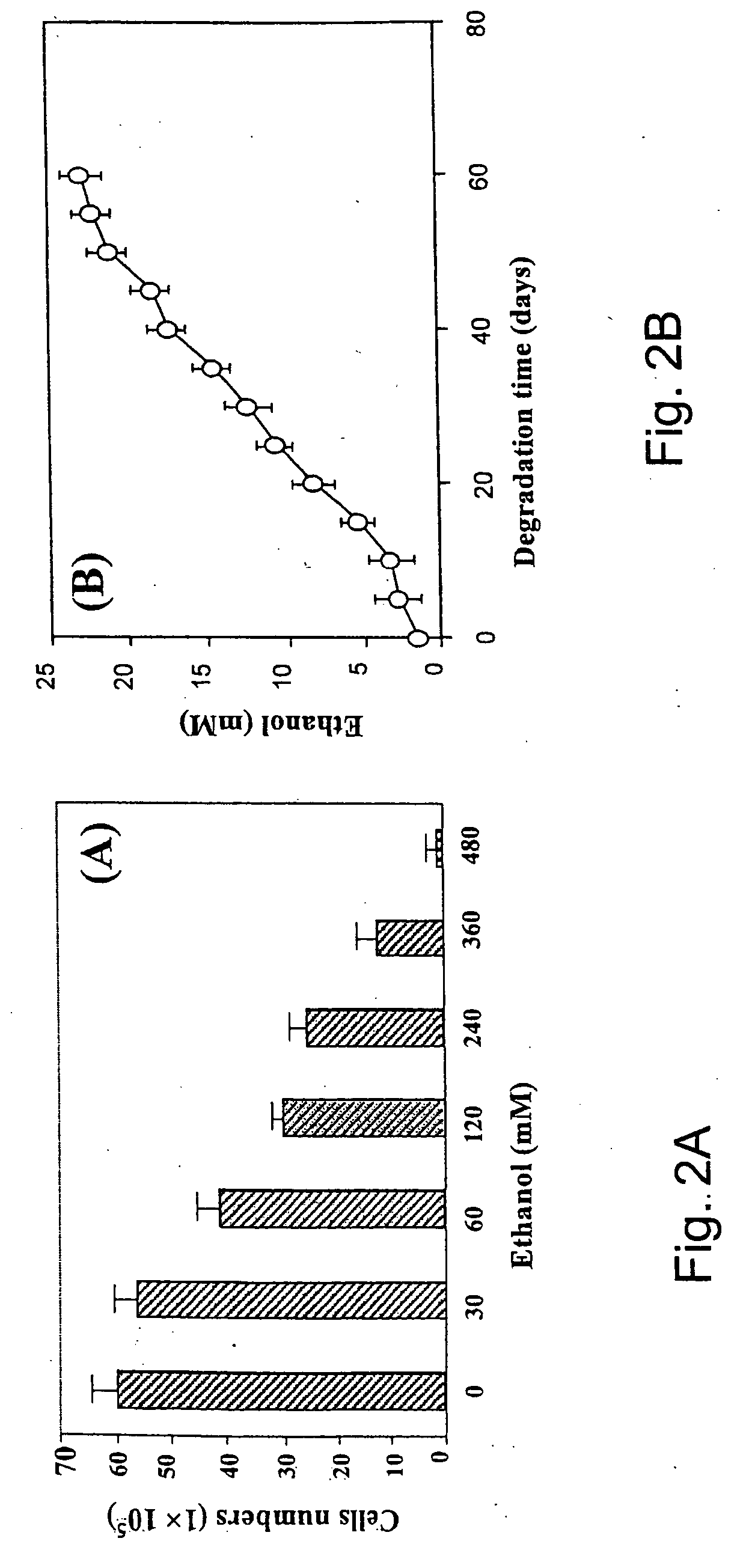Biodegradable polyurethanes and use thereof
a biodegradable polyurethane and polyurethane technology, applied in the field of biodegradable polyurethanes, can solve the problems of limited use of allografts and xenografts, and many problems persisting from the inability to precisely match the properties of natural tissu
- Summary
- Abstract
- Description
- Claims
- Application Information
AI Technical Summary
Benefits of technology
Problems solved by technology
Method used
Image
Examples
example 1
LDI-glycerol-PEG-ascorbic Acid Polyurethane Polymers
Materials
All chemicals were analytical grad and from Sigma (St. Louis, Mo.) unless otherwise stated. Polyethylene glycol (average Mn ca. 200, PEG) was from Aldrich Chemical Company, Inc. (Milwaukee, Wis.). Dulbecco's Modified Eagle Media (DMEM) was from Life Technologies (Grand Island, N.Y. 14072,USA), and molecular biology reagents were from Perkin Elmer (Norwalk, Conn.).
example 1a
Synthesis of LDI-glycerol-PEG-AA Polymer
Lysine diisocyanate ethyl ester (LDI) was synthesized according the method described by Zhang et al. See Zhang, J. Y., Beckman, E. J., Piesco, N. P., and Agarwal, S. A new peptide-based urethane polymer: synthesis, biodegradation, and potential to support cell growth in vitro. Biomaterials 21, 1247-1258, 2000. The ascorbic acid containing polymer scaffold (LDI-glycerol-PEG-AA) was synthesized as follows: 35 mg ascorbic acid, 1.6 g PEG 200 (8 mmol, —OH 16 mmol) and 1.6 g glycerol (17.39 mmol, —OH 52.17 mmol) were mixed in a dry round-bottom flask, which was then flushed with nitrogen and fitted with a rubber septum. Subsequently, 7 ml of LDI (35.84 mmol, —NCO 71.67 mmol) were added to the flask with a syringe. The reaction mixture was stirred in the dark at room temperature for 5 days. The formation of urethane linkages was monitored by FT-IR spectra. When FT-IR spectra (specifically the peak at 2165 cm−1) showed that approximately 90% of the...
example 1b
Measurement of Ascorbic Acid Distribution
To test the distribution of ascorbic acid in the LDI-glycerol-PEG-AA polymer foam, three random pieces of the polymer foam were cut and heated at 100° C. for 3 hrs. Ascorbic acid distribution was measured by the appearance of yellow color of the LDI-glycerol-PEG-AA foam, and the LDI-glycerol-PEG polymer foam was used as a control and treated the same as the LDI-glycerol-Peg-AA polymer foam.
PUM
| Property | Measurement | Unit |
|---|---|---|
| diameter | aaaaa | aaaaa |
| diameter | aaaaa | aaaaa |
| elastic moduli | aaaaa | aaaaa |
Abstract
Description
Claims
Application Information
 Login to View More
Login to View More - R&D
- Intellectual Property
- Life Sciences
- Materials
- Tech Scout
- Unparalleled Data Quality
- Higher Quality Content
- 60% Fewer Hallucinations
Browse by: Latest US Patents, China's latest patents, Technical Efficacy Thesaurus, Application Domain, Technology Topic, Popular Technical Reports.
© 2025 PatSnap. All rights reserved.Legal|Privacy policy|Modern Slavery Act Transparency Statement|Sitemap|About US| Contact US: help@patsnap.com



